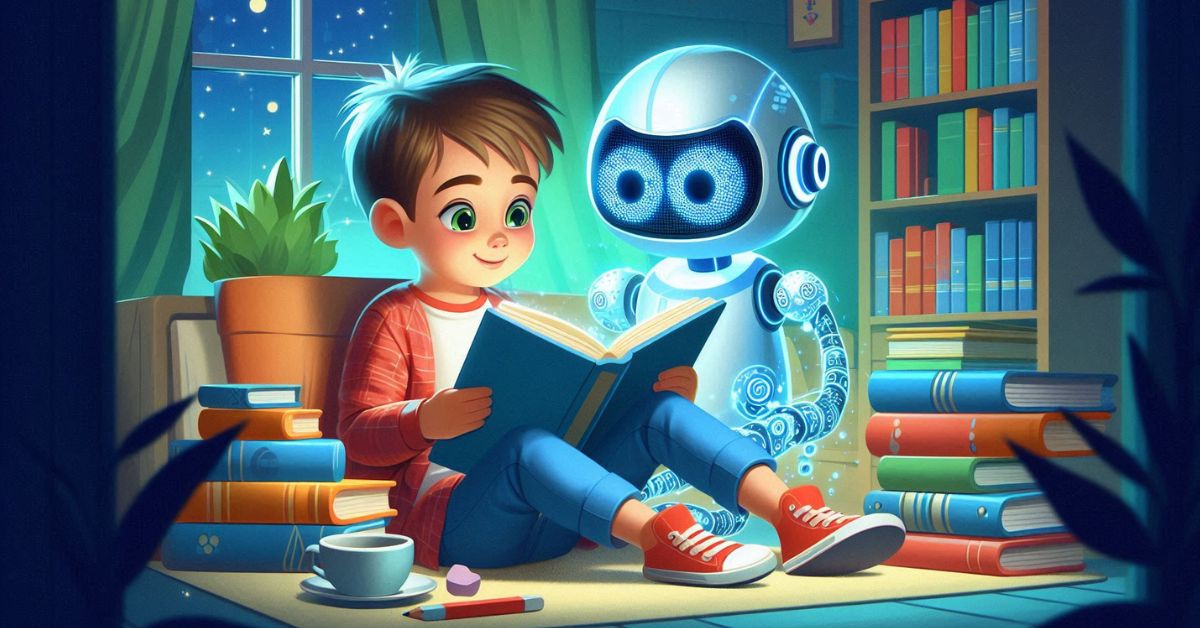In a world where screens dominate entertainment, parents often worry about finding ways to encourage reading without increasing screen time. What if technology could actually help children fall in love with books—not just on a device, but in a way that brings stories into their hands? AI stories based on prompts are revolutionizing the way kids engage with reading, and thanks to print-friendly options, AI stories can also become cherished physical books.
The Power of AI-Generated Stories Based on Prompts
Every child is unique, with their own imagination, interests, and dreams. Traditional books, while wonderful, don’t always cater to a child’s specific curiosity at a given moment. AI generated bedtime stories allow parents and children to create personalized tales based on a simple prompt—whether it’s a story about a brave little astronaut, a talking squirrel, or an underwater adventure with friendly mermaids. The result? A completely unique, engaging story tailored to the child’s interests.
By making children active participants in the storytelling process, AI-driven narratives spark curiosity and excitement. Kids love to see their ideas come to life in a full-fledged story, reinforcing their sense of creativity and making reading an enjoyable, immersive experience.
AI Stories Don’t Have to Mean More Screen Time
One of the biggest misconceptions about AI-generated stories is that they must be read on a screen. However, the ability to print these stories transforms them into tangible books, much like traditional bedtime stories. Parents can easily generate a story, print it out, and create a custom book at home—turning a digital experience into a real-world reading adventure.
Printed AI-generated books allow children to hold, flip through, and even illustrate their own stories. This physical interaction strengthens reading habits by engaging more senses than just sight and hearing. Studies show that children remember information better when they engage with a printed book rather than reading on a screen, making the AI story to print an excellent tool for literacy development.
Encouraging a Love for Reading Through Personalization
Personalized stories have long been recognized as a powerful way to get kids excited about reading. When children see themselves or their interests reflected in a story, they are naturally more engaged. With AI story generators, every story can be customized to include the child’s name, favorite themes, or even their own imaginary world.
Imagine a child who struggles with reading but loves dinosaurs. Instead of a generic book, an AI story generator can craft a tale where that child embarks on an adventure with talking dinosaurs—instantly making the experience more captivating. When children feel personally connected to a story, they’re more likely to read for longer periods and develop a lasting love for books.
How AI Story Printing Works
Thanks to AI advancements, creating a personalized, printable book is easier than ever. Parents can enter a simple prompt—such as “A bedtime story about a magical treehouse”—and within moments, they receive a beautifully structured story. Such platforms allow users to format these stories for easy printing, turning them into actual books with illustrations and structured pages.
For parents who want to avoid unnecessary screen exposure, these printed AI-generated books provide the perfect compromise: a technology-powered story experience without prolonged digital interaction.
The Benefits of Printable AI Stories
- Tactile Engagement
Holding a printed book helps children develop fine motor skills and a deeper connection with reading. Unlike scrolling on a screen, turning pages requires hand-eye coordination, which is an essential skill in early childhood development. The act of physically interacting with a book also enhances comprehension and memory, making the reading experience more immersive and beneficial.
- Encourages Creativity
Kids can illustrate the stories themselves, adding an extra layer of personal engagement. To go even further : coloring, drawing, or even adding stickers to their AI-generated printed books allows them to take ownership of the story, making it an interactive and fun activity. This creative involvement not only makes reading more enjoyable but also fosters artistic expression and storytelling skills.
- Customizable for Learning
Sometimes parents can adjust difficulty levels, add interactive questions, or even translate stories into different languages. This flexibility ensures that stories can grow with the child’s reading ability, making them suitable for different age groups and learning styles. Parents and educators can also integrate educational elements into the stories to enhance the learning experience.
- Great for Shared Reading
Printable books allow parents and children to read together, fostering bonding time without other digital distractions. Reading aloud strengthens the parent-child relationship while improving listening and comprehension skills. When children experience stories in a shared setting, they are more likely to associate reading with warmth, comfort, and positive emotions, encouraging a lifelong love for books.
AI Storytelling: A Bridge Between Technology and Tradition
AI-generated stories are not here to replace traditional books but to complement them. They offer a balance between modern technology and the time-honored tradition of bedtime stories. For parents seeking creative ways to get their kids excited about reading, AI story generators provide a solution that is both innovative and personal.
Whether on a screen or in print, these stories nurture a child’s love for storytelling, helping them become lifelong readers. By combining personalization, accessibility, and print-friendly options, AI-generated stories open new doors for young minds—both in the digital world and beyond. So, why not give it a try?
ALSO READ: Evlwendz: Revolutionizing Communication in the Digital Age

